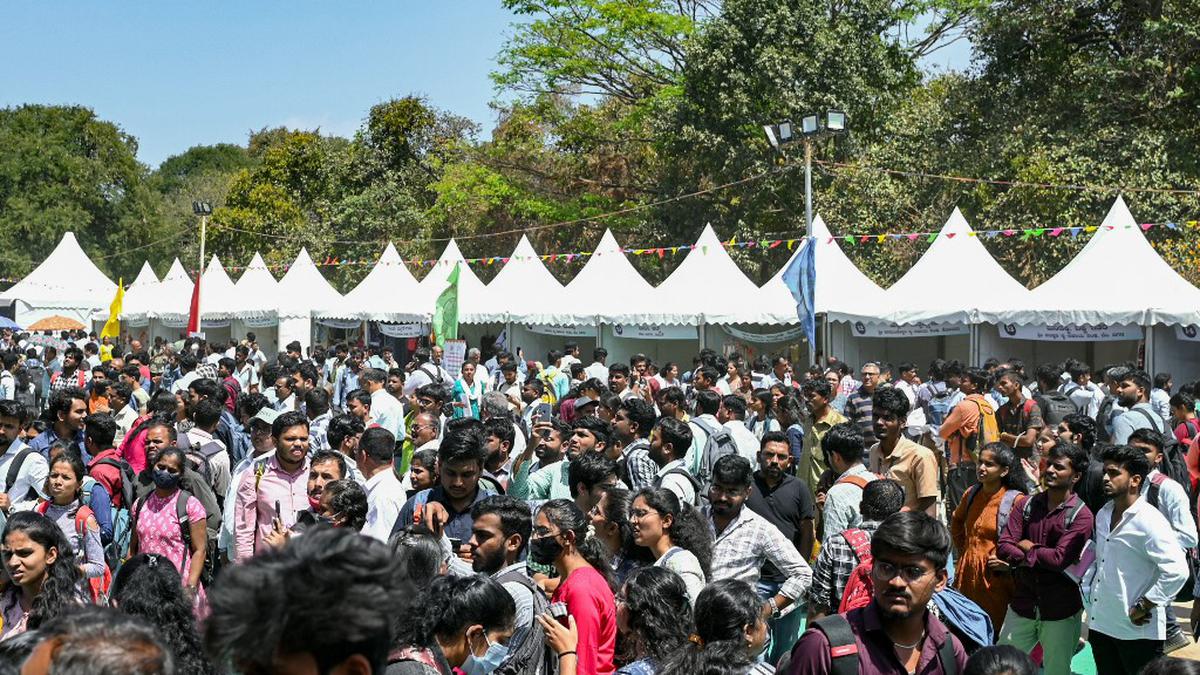
Why is unemployment high among the youth? | Explained Premium
The Hindu
Why are educated youth also not getting jobs? Why is women participation in the labour force low?
The story so far: The India Employment Report 2024, prepared jointly by the Human Development and the International Labour Organization, and released on March 26, revolves around “youth employment, education and skills.” It has analysed trends and patterns of the Indian labour market for two decades, including the COVID-19 years, and listed the “emerging characteristics of the employment challenges now confronting the economy as well as the impact of growth on employment.”
The report’s authors note that the proportion of India’s working-age population (aged 15–59) increased from 61% in 2011 to 64% in 2021 and is projected to reach 65% in 2036. About 7-8 million young people are added each year to the labour force. Though the proportion of youth getting an education increased from 18% in 2000 to 35% in 2022, the percentage of youth involved in economic activities decreased from 52% to 37% during the same period. The authors warn that unemployment in the country is “predominantly a problem among youth”, especially those with a secondary level of education or higher, and that it has intensified over time. “In 2022, the share of unemployed youth in the total unemployed population was 82.9%,” they noted, adding that the share of educated youth among all unemployed people also increased, from 54.2% in 2000 to 65.7% in 2022. Also, among the educated (secondary level or higher) unemployed youth, women accounted for a larger share (76.7%) than men (62.2%).
Santosh Mehrotra, who taught labour economics at Jawaharlal Nehru University and whose studies have been cited in several chapters in the report, told The Hindu that it’s a question of both lack of opportunities and unemployability of educated youth due to poor quality of education. He urged the government to ensure that the development of skills was separated from formal education. The ILO and IHD said the share of technically qualified youth was low in India: 15.62% youth had vocational training in 2022, but out of them only 4.09% had formal vocational training.
Editorial | Jobs outlook bleak: On the ‘The India Employment Report 2024’
According to Mr. Mehrotra, the fact that employment in the agriculture sector has increased after 2019 is because of the lack of quality education among the youth, making it difficult for them to get jobs in other sectors.
The report’s authors pointed out that most jobs in 2023 (90.4%) were in the informal sector; and that around half the jobs in the formal sector (45.2%) were also of an informal nature. Mr. Mehrotra stressed the importance of creating more jobs in the formal sector, pointing out that the unemployment rate among youth had tripled between 2012 and 2018.
The ILO and IHD stated that the jobs remained low-productive and low-earning. Real wages and earnings showed a decline or had stagnated. A large proportion of regular workers (40.8%) and casual workers (51.9%) did not receive the average daily minimum wage prescribed for unskilled workers. The government-prescribed rate is ₹480 per day.













